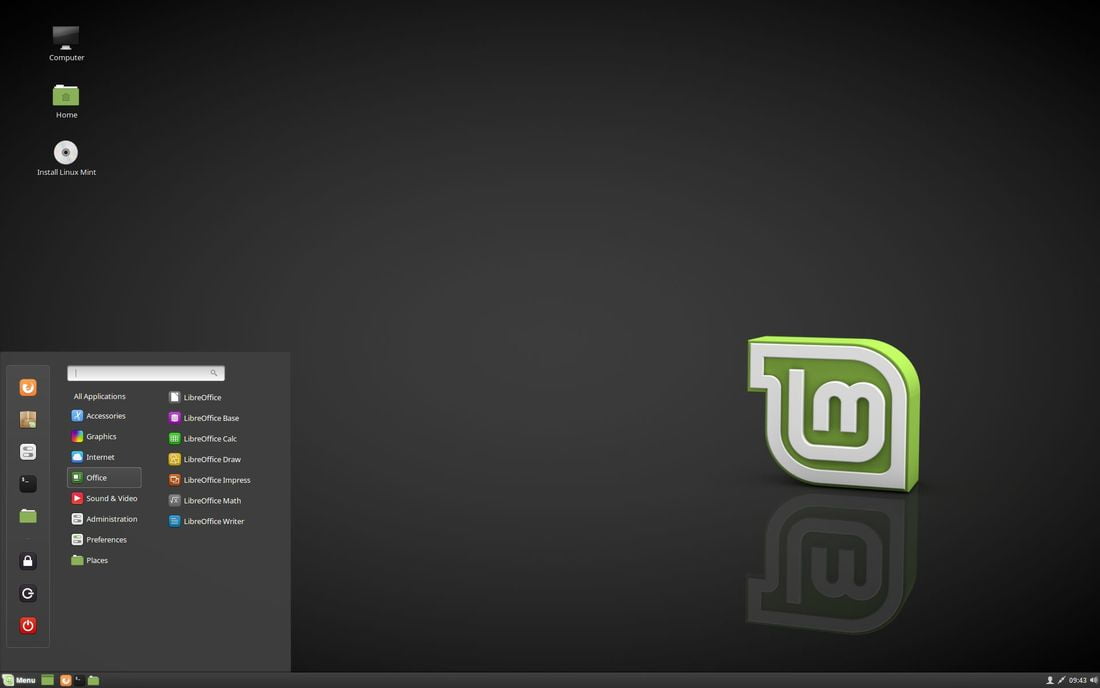Linux Mint Vs. Ubuntu - Which Is Better in 2023
Table of Contents
Ubuntu and Linux Mint are currently arguably two of the most popular Linux distributions around. Both distros are quite user-friendly and for Linux newbies, you couldn’t be wrong choosing either.
For a very long time, Ubuntu was considered the distro of choice by most Linux enthusiasts, but it has currently been surpassed by Linux Mint (and Debian) as the distro with the most hits on Distrowatch.
But which one is better? I believe we all have our favorite distros but having used either of these distros, I’m going make an argument for why I believe one is better than the other, so let’s see if you can agree with me.
Linux Mint Vs. Ubuntu
System Requirements
Both Linux Mint and Ubuntu have quite similar requirements. For new computers, whichever way you go, you’re going to be fine. For older hardware, Ubuntu does best with Lubuntu, Xubuntu, and Ubuntu MATE flavors, and Mint users also have Mint MATE edition available.
Linux Mint vs. Ubuntu Installation
There isn’t much difference in the installation experience of both distros. Both use the Ubiquity installer and the experience is quite similar. Ubuntu and Linux Mint both offer support for UEFI.
Interface(default)

The default interface for Ubuntu is Gnome. With Gnome, Canonical provides a global menu and notification area occupying the top panel. Some common applications live in a dock on the left. You launch the software from the Dash by clicking on the Ubuntu icon.

Mint ships with Cinnamon as its default DE. Applications appear in the panel on the bottom of the desktop, with a launcher menu in the bottom left and system icons on the right in a manner quite similar to MS Windows. “Unity like Gnome” may feel more familiar to Mac OS X users, while Windows users will feel right at home on Linux Mint.
Software Out Of The Box
Both Mint and Ubuntu use mostly free and open-source software. Unlike Ubuntu, Linux Mint comes pre-installed with some proprietary software that most users tend to need, such as Flash, Java, audio and video codecs.
Both distros come pre-installed with LibreOffice and Firefox web browser. With Linux Mint, you also get VLC and GIMP out of the box. Overall, Mint comes with more apps out of the box than with Ubuntu.
Software Installation
Both Linux Mint and Ubuntu also have their own app stores that make it easy to find and install new software. Gnome software (previously Ubuntu’s Software Center) comes with Ubuntu and Linux Mint also offers Mint Software Manager(also responsible for updates) which is usually mistaken as a system tool instead of an app store.
Both stores provide you with a ton of open-source software for you to download and use.
Official Spins
There are ten different official flavors of Ubuntu listed on their website. Besides the Gnome desktop, you have alternatives that have their default DEs KDE, LXDE, XFCE, MATE, and MythTV.
There are also specialized distributions including Edubuntu for the education community, Ubuntu Studio for multimedia production. There’s also Ubuntu Kylin for Chinese users. Linux Mint, on the other hand, comes in four main distros. There’s Cinnamon, MATE, KDE, and XFCE.
Best CMS For 2023
If you want to start your own website in 2023, there are many easy ways to do so with the help of one of these CMS, or content management systems.
Customization (default flavor)
One great thing about Linux is the amount of customization it allows. With Ubuntu, most of this has been done within recent releases. You are quite limited to what you can tweak. Linux Mint, on the other hand, has lots of settings that allow you to tweak everything down to the very little details of your interface. Its customization is your thing, Linux Mint does it way better.
Performance (default flavor)
Linux Mint most definitely has an edge when it comes to speed and performance. On a newer machine, the difference may be barely noticeable, but on older hardware, it will definitely feel faster. Ubuntu appears to run slower the older the machine gets. If you’re going to use Ubuntu on older hardware, I recommend you install Lubuntu or Xubuntu.
Upgradeability
Both Linux Mint and Ubuntu allow you to update to the new releases from the very recent version almost as soon as they are available. Software updates are also provided have easy-to-use updaters.
For Ubuntu, it’s just a case of clicking on the Dash icon in the dock and searching for the Software Updater. For Ubuntu, you use the software updater to check, download and install any updates (OS or apps), download them, and then install them.
The process is similar in Linux Mint using the Update Manager app to update your apps or OS. It is also worth noting that there has been some concern towards Mint’s approach to providing important updates.
Support
While Ubuntu has software company Canonical behind it to run its development, Linux Mint relies on individual users and companies using the OS to act as sponsors, donors, and partners. Both distros also have vibrant community support.
Wrapping up
Both Ubuntu and Linux Mint have a lot going for them and choosing one over the other. The main difference between the two is how they are implemented in terms of the User Interface and support.
Between the default flavors, (Ubuntu and Mint Cinnamon), it is not easy recommending one over the other. Ubuntu suffered a great deal of backlash due to Unity (though it has now switched back to gnome) even though it is considered the more modern of the two, whilst Cinnamon is considered the more traditional but looks a bit old-fashioned.

So which one is better? My Verdict.
Based on the arguments I have outlined for either distro, I have provided a scorecard for them.
| Category | UBUNTU | LINUX MINT |
| System Requirements | 10 | 10 |
| Installation | 10 | 10 |
| Interface(Default) | 9 | 10 |
| Software (Out of the box) | 9 | 10 |
| Software Installation | 10 | 9 |
| Official Spins | 10 | 7 |
| Customization (Default) | 8 | 10 |
| Performance (Default) | 8 | 10 |
| Upgradeability and Updates | 9 | 8 |
| Support | 10 | 10 |
| TOTAL | 93/100 | 94/100 |
Ubuntu has a lot going for it but it comes up on top only in 3 categories whilst Linux Mint comes top in 4 categories. Canonical has done a great job at keeping Ubuntu stable and secure. They also try well to keep their official packages as new and updated always. They lay down their own infrastructure (that Mint relies on). They provide a go-to point for transitioning OS users and companies.
But Linux Mint’s desktop and menus are easy to use whilst Ubuntu’s dash can be sort of confusing especially for new users. It’s the gate that ex-Windows users walk through and as such is the most welcoming to such persons. Mint gives more in terms of the pre-installed software but finding and installing software from Ubuntu’s Software Center can be a little easier.
Conclusion
So about Linux Mint Vs. Ubuntu, I’m choosing Mint over Ubuntu, but don’t get me wrong, Ubuntu is awesome once you know what you are about. I do believe Linux Mint in its current state is a wee bit superior to Ubuntu.
Linux Mint is possible “Ubuntu done better”. Overall, Linux Mint with Cinnamon feels far more polished than Ubuntu with “Unity like Gnome”.
So, what do you think? Do you think Ubuntu is better than Linux Mint? Is there stuff I should have talked about? Let us know in the comments.
Best Self-hosted Email Clients
Self-hosted email clients are those that we can host on our own server or on our local network. The advantage of using a self-hosted email client is that it makes your email accounts accessible to any devices on a network.
LinuxAndUbuntu Newsletter
Join the newsletter to receive the latest updates in your inbox.



